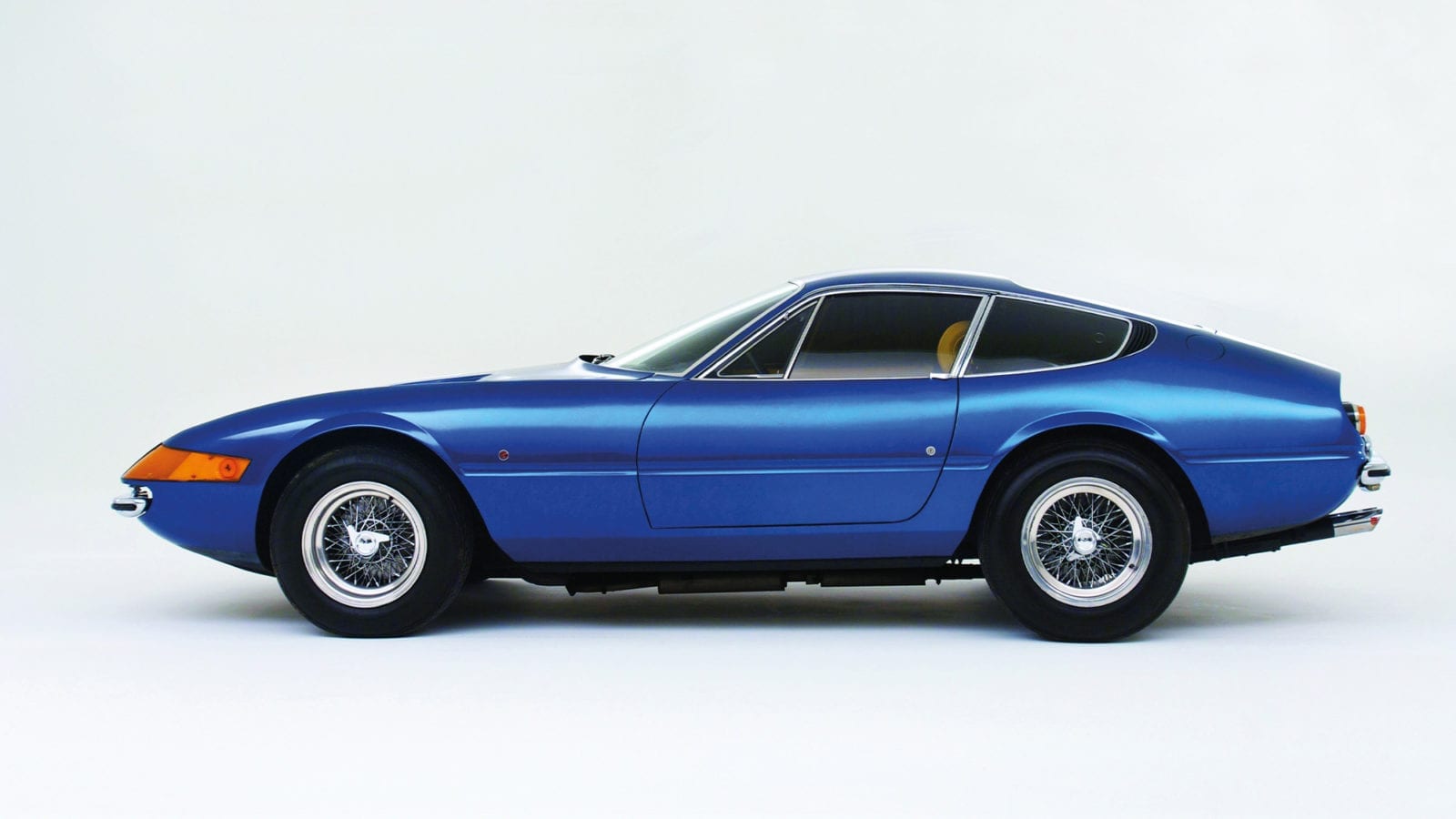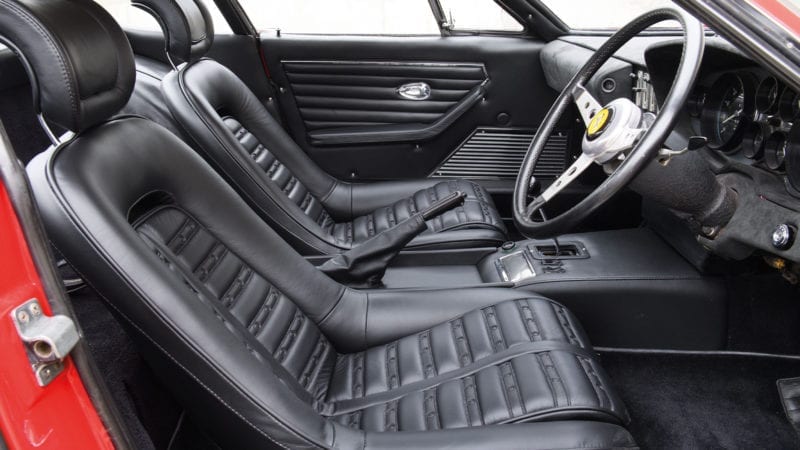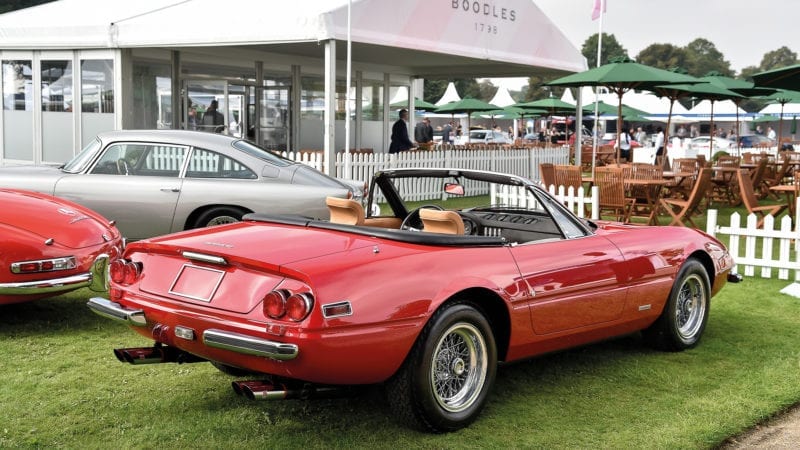
Miscellany, June 1998
The author of the biography of the writer Henry Williamson, Tarka And The last Romantic (ISBN 0-7509-1492-0), is his daughter-in-law, who with her husband is a member of the Alvis…

With a far more angular body shape than its predecessor, the Daytona was a step-change in Ferrari design
What’s in a name? A great deal when you have a product to sell. Something both memorable and relevant, surely? That wasn’t the situation Ferrari found itself in when the covers first came off the angular beauty of the ‘Daytona’ at the Paris Motor Show of autumn 1968.
You can just imagine the chatter among the assembled journalists: “What’s it called?”; “The 365 GTB/4.”; “What was the last one called?”; “The 275 GTB/4”; “Bit wordy, these names… Has Ferrari done anything of note recently that it could name a car after instead?”; “Well, it locked out the podium at Daytona last year”. “Perfect!”
And hey presto, the car was unofficially nicknamed the Daytona in tribute to Chris Amon/Lorenzo Bandini’s 330 P3/4 Spyder leading the 330 P4 Coupé of Mike Parkes/ Ludovico Scarfiotti home in the 1967 Daytona 24 Hours, with the 412P of Pedro Rodríguez/ Jean Guichet in third.
Rarely, if ever, has the media better named a new car than its maker, but Daytona stuck and, while Ferrari’s official records scarcely ever mention the term, that’s how the 365 GTB/4 has forever become known to the wider world.
The model itself had something of an end-of-era feel about it for Ferrari, being the final V12-powered machine to be built prior to the company’s sale to Fiat in 1969, and being the last 12-cylinder of the time to be sold to America until the Testarossa arrived in the ’80s.

Of the 1300 Daytonas built by the factory, only 158 were right-hand-drive examples
The late 1960s were a key period for automobile design. While Ferrari’s preceding 275 was a curvaceous beauty, the cultural shift toward more angular shapes meant the company had to react when suddenly a 275 looked comprehensively out-dated next to something like a Lamborghini Miura.
Ferrari’s response was to take the base from the 275 and rework it from all angles. Pininfarina was handed the task of the bodywork, with Scaglietti handling the construction. Out went the traditional rounded coachwork, and in came a more wedge-like silhouette: sharper, dramatic, shark-like, with a Kamm tail and a distinctive semi-circular indentation line running along the side, which would go on to be a design feature for many models to follow.
The Daytona’s heart was reworked, too. Gioacchino Colombo’s legendary V12 was carried across from the 275 but was hugely enlarged from 3.3 to 4.4 litres and fitted with six twin-choke Weber carburetters allowing it to produce around 350bhp.
All European cars featured steel chassis and bodies, with aluminium doors, bonnet and boot-lid to trim weight. And that made the Daytona fast. Autocar recorded a 0-60 time of just 5.4secs and a maximum speed of 174mph, statistics which remained a record for the magazine’s road tests for quite some time.
Sales of the Daytona were strong, with Ferrari producing almost 1300 of the standard model – including 158 right- hand-drive models for the UK – and then introducing a drop- top spider, of which a further 121 were made.

The incredibly pretty spider versions came along later and are extremely rare, with only 121 ever built
The first iteration of the new design featured headlights concealed behind plexiglass, maintaining the chisel nose, but cars from 1971 on featured pop-up headlights instead due to a change in US safety regulations.
Naturally the model also went racing, but not officially for Ferrari. A total of 15 Competizione versions – as well as one all- aluminium version made for Luigi Chinetti’s NART team – were created from 1970 for customer teams. They featured lightweight bodywork and engines tuned to anywhere between 400-450bhp. The Daytona’s biggest result came at Le Mans in 1972, when the cars filled the top five in the GT class, before also winning at La Sarthe in 1973 and 1974.
Perhaps the model’s last notable result came at its namesake, Daytona, when John Morton/Tony Adamowicz steered their NART 365 GTB/4 Competizione to second overall, over a decade after the Daytona had first been launched, and a full six years after it finished production.
Call it what you like, the Daytona certainly had staying power.